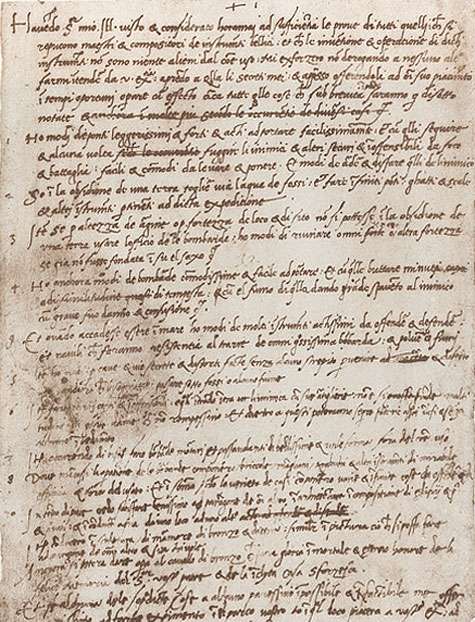Resumé (noun):
“A summary or synopsis; a brief written account of one’s education, qualifications, experiences, skills, and other relevant information, typically submitted when applying for a job or seeking admission to an educational institution.”
The word résumé is derived from the French word résumer, which means “to summarize”. A resume is a document that summarizes an individual’s qualifications and experiences, and has been an integral part of the recruitment process for centuries. From its early origins to its evolution in the 20th century and its current state in the digital era, the resume has played a significant role in job applications.
Today this process is required to gain employment, but it wasn’t always this way. So where did the resume come from? And how did it become such an integral part of the hiring process?

The First Recorded Resume
There is no specific date or any one person that can be credited with the invention of the resume. Varying sources claim the resume was started by heads of guilds in the Middle Ages. Others say it was the famous artist Leonardo Da Vinci.
While the exact origin of the resume is unknown, it more than likely evolved over time.
While it is unclear who invented the resume, Leonardo is the first recorded person to use one. In 1482 Leonardo da Vinci wrote a letter to the Duke of Milan in an attempt to gain his patronage and support. Da Vinci’s letter listed focused on the skills and experience that would most benefit the Duke and address his current needs, the same thing we all do in the modern world to our potential employers. Little did Da Vinci know that he was starting a process that would continue on into today and become an integral part of the hiring process.
1500s England
In the late 1500s an English land surveyor named Ralph Agas wrote a number of advertisements in which he described his skills, expertise, and projects. In one of his ads he asserts that he has 40 years experience in the field of land surveying. Agas was possibly the first person to use media to publicize his resume.
At the time, the term resume was not widely used, and Agas’s list of skills, expertise, and work history was called an advertisement, but what is a resume if not an advertisement of one’s skills and expertise?
There are varying accounts of where the modernized term “resume” originated. One source claims that a traveling English lord coined the term when he called his letter of introduction a resume. Another source asserts that the term developed over time within the English skilled artisan and labor guilds of the Middle Ages. The English guilds were made up of individuals with specific skills and expertise, and a resume was an easy way to highlight their experience. Their wealthy patrons found the resume an easy way to hire artisans based on their particular qualifications.
20th Century
There is a gap of information between 1600 and the 20th century on resumes. This may be attributed to the rise of the industrial age in which the use of skilled laborers and artisans declined. It’s not to say there weren’t individuals with unique skill sets that used a resume, but there is very little recorded on the use of resumes during that age.
In the early 20th century the use of resumes had become common practice for job applicants to provide a written document that listed their qualifications, previous roles, and experiences for hiring managers to reference. By 1950, having a written resume was a prerequisite for getting an interview. Resumes at this point also came in different formats, from handwritten to typewritten.
The Digital Age
In the 1970s, VHS portfolios were used by some as an addition to a resume. Similar to how architects have portfolios today, displaying the projects they have worked on. Microsoft and IBM made resume writing much easier in the 1980s when personal computers and Microsoft Word was made widely available to the public. The resume took on a more professional and standardized appearance. A professionally typed resume and a personalized cover letter became signs of professionalism and were expected by many employers. Fax machines then became the most popular way to distribute and submit resumes by 1987.
The Resume Goes Online
Resume distribution was revolutionized in the 1990s by the internet. The resume took a digital turn as many job applicants started sharing their resumes online through the use of online job boards. CareerBuilder and Monster.com were founded and became popular with the public. People now had a way to publicize their resume without taking an ad out in the newspaper. Job seekers could upload their resumes online, increasing their visibility and potential matches for job opportunities. Professionals no longer had to apply directly; recruiters could now find their resume online and contact them for employment. Along with access to the internet came the ability to email resumes to potential employers, which is still the most popular method of submission to this day.
Social Media
The start of the 21st century saw a further evolution for resumes on the internet. Social media became a great way to network and spread resumes. In 2003 LinkedIn.com was launched, which allowed users to post their resume and skills online. It has become a key tool for professionals to network and gain employment. The internet also brought us resume help websites like Optimal Resume, which can help professionals write effective resumes. By 2010 virtual portfolios were used in conjunction with resumes.
Optimizing the Resume for Today
Resumes today are an integral part of the hiring process. Its origin goes back to Leonardo De Vinci and the skilled labor, trade and artisan Guilds of the middle ages. Its origins may possibly be even further back, as skilled professional throughout history needed a way to highlight their capabilities. With the invention of paper, it became even easier to advertise skills and abilities. And with the internet, your resume submission is only a click away.
In today’s competitive job market, a resume serves as a crucial tool for job seekers. Today’s resumes are typically limited to one or two pages, highlighting the experiences and qualifications that are most relevant to the desired position. Many resumes are now optimized to include keywords or skills that potential employers are searching for via applicant tracking systems to increase the likelihood of being found in a computerized keyword scan. A well-written and keyword-optimized resume is the first step in securing a new career, followed by mastering the art of acing an interview.
AI and the Future of Resumes
AI is expected to have a significant impact on resumes in the future. As an AI-powered language model, ChatGPT can assist with resume writing in several ways. It can provide suggestions and recommendations on resume content, structure, formatting, and style. For example, it can help users with language and grammar checks, provide ideas for describing their skills and experiences, and offer guidance on how to tailor their resume to specific job requirements. ChatGPT can also help users brainstorm and generate content for their resume based on their input and prompts. However, human input and judgment will remain crucial as resumes are not just about content, but also personal branding and storytelling. Candidates should review and customize resumes generated by AI tools to ensure they accurately represent their unique skills and experiences.
Throughout history people have sought ways to gain employment. And although much evolved, the resume has become the standard for differentiating skills and landing your next career move.
Original Author Cody Burdick (with edits by: Leah Stevens)



